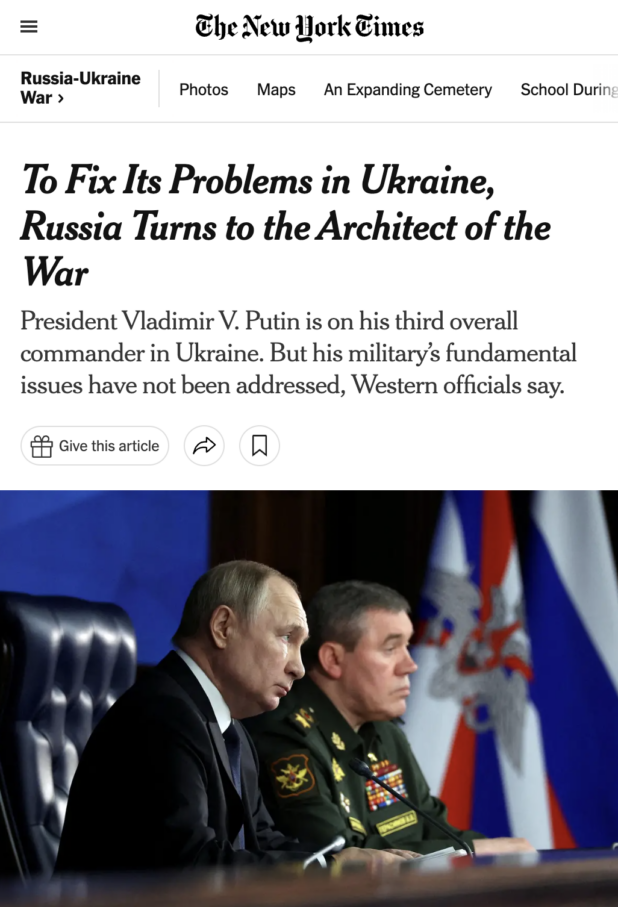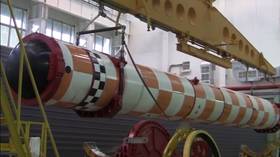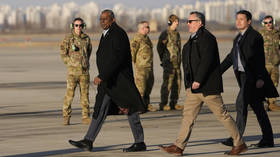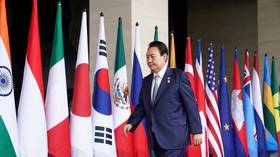Will the NATOizaton of the Ukrainian Army Give the West a Victory?
30.01.2023
Column: Politics

While Ukraine is not a member of the North Atlantic Treaty Organisation (NATO), the way the West has supplied weapons to the Ukrainian army to fight the Russian forces has increasingly NATOized Ukraine’s forces. As I mentioned previously, Russia is fighting a conflict not with Ukraine but with NATO. This is evident not just in terms of the fact that the whole Western alliance against Russia happens to be part of NATO but also in terms of the very weapons that the Ukrainian forces are using. Importantly enough, this NATOization is not something that started to happen after Russia began its military operation in Ukraine in February 2022. As NATO itself mentions on its website, the alliance has been supporting Ukraine since the 2014 Crimea events. The support includes, NATO says, “equipment and financial support” as well as “training for tens of thousands of Ukrainian troops.” It also mentions that the alliance has enhanced its support ever since February 2022.
The claim tells many things, but the most important one is that the ongoing conflict was neither inevitable nor unprovoked. What led to the present state of affairs was precisely this ongoing NATOization of Ukraine since 2014, a policy that actually laid the groundwork for Washington to push for Ukraine’s formal membership of NATO in 2021-22. The conflict would not have taken place if the West had eschewed arming Ukraine and using this territory to expand NATO. It is this Western strategy, rather than the so-called Russian “unprovoked aggression”, that made the present conflict inevitable.
The West, in keeping with its policy, is continuing its policy, which is evident from the recent decision of the UK government to provide Ukraine with its Challenger 2 Tanks. Ben Wallace, the UK’s Defence Secretary, called this supply “the most significant package of combat to date to accelerate Ukrainian success.”
While there are not enough tanks, the US has already announced to send Bradley infantry fighting vehicles to support tank warfare. A clear escalation is taking place, but the big question is: will it work to achieve the objective that the suppliers have in mind?
The US/NATO fought a twenty-year-long war in Afghanistan against a much weaker enemy, let alone a non-nuclear country, in Afghanistan. It withdrew after two decades without achieving its key objective i.e., dismantling global terrorism. Afghanistan today has many terror groups – al-Qaeda, the IS-K, the ETIM, and the TTP – operating from within its borders. Clearly, the presence of these groups reflects a US military defeat in terms of achieving its objectives even after spending billions of dollars.
The US has so far spent only a fraction of that money in Ukraine where NATO is fighting a country that has the largest nuclear stockpile in the world. Keeping this in mind, the strategy not only seems unrealistic, but unworkable as well. Short of providing Ukraine with actual nuclear weapons and creating a nuclear deterrence vis-à-vis Russia – which is not even conceivable – there is no way NATO can arm the Ukrainian army and help Ukraine in ways to actually defeat Russia.
On the contrary, hawks in the West – especially, in the US and UK – continue to see it within the realm of possibility to achieve their objectives, which now include creating a situation favouring a coup in Russia against President Putin.
This NATOization is unlikely to work, not only because not everything can possibly be supplied to Ukraine – that is, unless the West wants a total, nuclear war – but also because Ukraine itself is fast running out of its capacity to fight a total war, let alone the present conflict.
Let’s see what the actual ground situation is. In and around Bakhmut, the Ukrainian forces lost 70 per cent of their fighting capacity in just one week in the second week of January. Does it make sense to continue to supply weapons to an army that is unlikely to win?
Many countries in the West think that it does not make sense. In a meeting held on American Ramstein Air Base in German on January 20 involving leaders from 50 countries, including NATO allies, the participants failed to reach a consensus on providing German Leopard Tanks to Ukraine. Although Germany has now decided to supply these tanks to Ukraine, the very fact that it took them so much time – and it involved lots of political pressure from Washington – to make this decision shows that the Western alliance is actually far from united. There are serious concerns that Germany itself shares.
As German Defence Minister Boris Pistorius said after the January 20 meeting, Germany is not alone raising concerns. He said that “there are many allies who say we share the view that I have put forward here.” Of course, the UK is not amongst them, as it has already decided to supply Challenger 2 tanks. But the fact that the UK took a decision independent of the rest of Europe means that Europe, thanks to Brexit, itself is divided between the EU and the UK.
The root cause of this disagreement is simple to understand. Many Europeans, excluding the UK, have realised that mainland Europe, or the EU, is a victim of the US-UK politics of NATO expansion and that the continent has become a proxy land for the US to fight the war of its own survival as the global hegemon, supported by its strongest allies in London.
For the US, Russia’s success in Ukraine would be the end of NATO and the end of Washington’s influence in Europe. Many Europeans already want a European security system independent of the US and NATO. Were this to happen, Europe can most certainly rewrite its ties with Russia in ways that avoid confrontation. But if this happens, the global strategic landscape will change in ways in which Washington will no longer be the only centre. Hence, the US-UK sponsored intensification of the war as the last-ditch effort to save the system they have been dominating for many decades.
Salman Rafi Sheikh, research-analyst of International Relations and Pakistan’s foreign and domestic affairs, exclusively for the online magazine “New Eastern Outlook.“
https://journal-neo.org/2023/01/30/will-the-natoizaton-of-the-ukrainian-army-give-the-west-a-victory/








